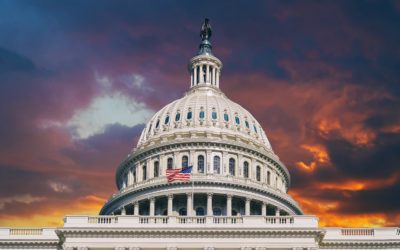
Introduction
An increasing number of states and localities are requiring or proposing mandatory warning labels and/or ingredient disclosure on packaging related to consumer products, ranging from cosmetic and cleaning products, to food and agriculture products. In 2017 alone, 29 package-labeling and ingredient disclosure bills were introduced in 12 states. While it is imperative that manufacturers warn consumers about actual hazards, the competing labeling and warning requirements are raising concern that varying labeling standards can confuse and mislead consumers about risks associated with a product, while inhibiting the free and open flow of commerce.
Read More…
These concerns are realities in California. The state’s labeling law, The Safe Drinking Water and Toxic Enforcement Act of 1986, was enacted as a ballot initiative, Proposition 65 (“Prop 65”). Under Prop 65, the State of California is required to maintain a list of chemicals known to the state to cause cancer, birth defects or other reproductive harm, or both. Since it was published in 1987, that list has grown to include more than 900 chemicals. Notably, Prop 65 requires persons doing business in California to provide a warning if they are exposing an individual to a listed chemical. Prop 65 contains no blanket exceptions from the warning requirement for certain kinds of products, nor for certain kinds of businesses other than businesses with fewer than 10 employees, so the statute can apply to a wide range of products, both industrial and consumer. Companies that operate in California or sell products in California are subject to the law.
While the intent of the law is seemingly about safety, there are two resulting elements that have distorted that goal, with a particularly perverse effect:
- Businesses are required to warn consumers if they are exposed — meaning the product contains a listed chemical, even if the amount of exposure is perfectly safe and poses no health hazard or risk, leading to confusion and unnecessary alarm; and
- Prop 65 allows for lawsuits to be initiated by private parties acting in the public interest, and a business found guilty of violating Prop 65 may face penalties of up to $2,500 per day for each violation, which has created a cottage industry for “bounty hunter” litigation.
The American Coatings Association (ACA) represents the nearly $30 billion paint and coatings industry in the United States, operating in all 50 states, and employing over 285,000 people engaged in the manufacture, application, and distribution of its products. ACA members are committed to providing consumers clear, accurate, and meaningful information about products they buy; consumers have the right to high-quality, science-based information about the products they buy. However, the current trend toward varied state programs mandating warning labels for consumer products based on unproven risk assertions is not only creating product labels for consumers that may become even more complex, potentially misleading, and possibly providing contradictory information — it’s creating a nightmarish patchwork of labeling requirements for industry.
This Issue Backgrounder addresses the need for Congressional action to establish nationwide science-based standards for government labeling programs. Uniform national standards will increase the relevance, consistency and accuracy of information about products and ensure greater certainty and clarity for consumers, farmers, food producers, manufacturers, small businesses and retailers.
States Following California’s Lead
As aforementioned, California’s Prop 65 requires warning labels on products that could expose individuals to a chemical known to cause cancer or reproductive toxicity. Nonetheless, California’s Prop 65 list contains 900+ substances, sometimes relying on questionable science while ignoring essential information such as how much of a substance is present and whether it is enough to harm a person under real-world circumstances — known as risk. These warnings create a false impression that many products, like coffee, are unsafe. Believe it or not, under Prop 65, businesses are required to warn that french fries can cause cancer, even though science shows it would take eating 182 pounds of french fries a day to create a cancer risk.
Read More…
This underscores that California has not set safe-use levels for most of the substances on the Prop 65 list, meaning that harmless trace amounts of a substance can make retailers and manufacturers vulnerable to frivolous lawsuits from private “bounty hunter” attorneys, which California allows to enforce the law. Because of California’s size and the inherent complexity of supply chains, consumers in other states are subject to questionable information about thousands of products, and many small businesses both in California and beyond have been victims of “bounty hunters” — not a state agency — who make millions of dollars from businesses that manufacture or distribute products that may contain a trace amount of a Prop 65 chemical. In 2016, according to the California Office of the Attorney General, attorney’s fees accounted for 72 percent ($21.5 million) of Prop. 65 settlements.1
Washington, Oregon, Maine and Vermont have implemented ingredient disclosure programs akin to California requirements, relying on scientifically suspect information to justify additional disclosures or implied warnings about products, meaning that product labels may become even more complex, potentially misleading, and possibly contradictory in the future. Several localities and states, including Berkeley, Calif., and the state of Hawaii have required or pursued health warnings on cell phones despite inconclusive evidence about the long-term effects of cell phone use.


Federal Action Is Urgent
There is an urgent need for federal action to require all federal and state labeling laws adhere to a risk and science-based standard that promotes clear and accurate labeling. Notably, the Ninth Circuit Court of Appeals, in September 2017, blocked a 2015 San Francisco ordinance that requires advertisers of sugar-sweetened beverages to post health warnings, arguing that the warning conflicts with statements by the Food and Drug Administration. The court determined, in that case, the First Amendment rights of companies who make those drinks and want to advertise their products were likely violated by the ordinance because the label in question is misleading, inaccurate, and controversial. The court wrote that it is unconstitutional for “the state to require corporations to provide one-sided or misleading messages” and the message “is deceptive in light of the current state of research.”
Read More…
While private brands and labeling programs must meet Federal Trade Commission standards for accuracy and the agency can challenge claims about products that lack an adequate scientific basis, similar high standards should apply to government requirements. Unfortunately, current and developing programs mandated by state or local governments do not have to prove the validity or relevance of the information they convey, nor clearly articulate to consumers if there is a meaningful health risk.
Moreover, inaccurate labels are confusing consumers and drive up prices for them, as well. They also create obstacles for businesses hoping to expand into new states. They cause expensive lawsuits and create unnecessary new regulatory burdens that are particularly difficult for small businesses to manage.
Congress should amend the Fair Packaging and Labeling Act (FPLA) to establish nationwide science-based standards for government ingredient disclosure and labeling programs. Uniform national standards will increase the relevance, consistency and accuracy of information about products, and ensure greater certainty and clarity for consumers, farmers, food producers, manufacturers, small businesses and retailers.
Ingredients for Reform
The growing amount of information on consumer product packaging mandated by state and local governments through labels, warnings or ingredient disclosures can confuse consumers, create obstacles to the free and efficient flow of commerce, and mislead the public about possible benefits or risks associated with a product’s use. Amending the FPLA would help allay that.
Read More…
ACA suggests those amendments provide for the following:
- All government warning and labeling programs must reflect the best available science and the weight of the scientific evidence. Information should adhere to high standards of scientific excellence.
- Consumer warnings must be based on risk, not hazard. Information is most valuable to consumers if it is based on risk, which is the likelihood that a substance could cause harm under real-world exposure scenarios. Many warning or labeling requirements are based on hazard, which is the ability of a substance to cause harm under any circumstance, even at exposure levels far beyond what is typical.
- Government labeling or warning programs must establish safe-use levels for substances. To justify warning or labeling requirements, state and governments must set de minimis levels based on high-quality science to establish what is a safe use of a substance and what exceeds a safe use. Because de minimis levels can be skewed by questionable science, these levels should be subject to possible challenge in federal court.
- Manufacturers should have flexibility about how to inform consumers. With the increase in labeling programs, many manufacturers and retailers are, or will be, subject to numerous different requirements. Businesses should have options for communicating messages to consumers including “smart labels” that make information available electronically. Electronic labels will allow manufacturers to provide vast amounts of information to consumers in a manner that doesn’t confuse or mislead people about product safety. This approach is consistent with federal legislation passed in 2016 regarding labels on genetically modified foods.


A Ready Partner
ACA is a member of the Coalition for Accurate Product Labels, along with 60 other trade association members representing a broad range of product sectors, including agriculture, chemicals, food, and plastics, to name a few. ACA would like to work with members of Congress to ensure that product labels provide consumers the best scientifically informed information available, and in this way, create a clear, navigable set of labeling standards for industry.
CONTACT
For more information, contact:
Heidi McAuliffe
Vice President, ACA Government Affairs
hmcauliffe@paint.org
202-719-3715
Riaz Zaman
Counsel, ACA Government Affairs
rzaman@paint.org
202-719-3715
Sources
1 In 2017, there were 688 lawsuits brought by bounty hunter lawyers. These cases yielded almost $19 million in attorney fees but only approximately $6.2 million in penalties or settlement payments. In 2016, 760 cases yielded over $21 million in attorney fees but only $8.5 million in penalties or settlement payments. In 2015, 582 cases yielded over $17.8 million in attorney fees and only $8.3 million in penalties or settlement payments. Information on Proposition 65 settlements from 2000 until the present is available on the Attorney General’s website at https://oag.ca.gov/prop65/annual-settlement-reports.